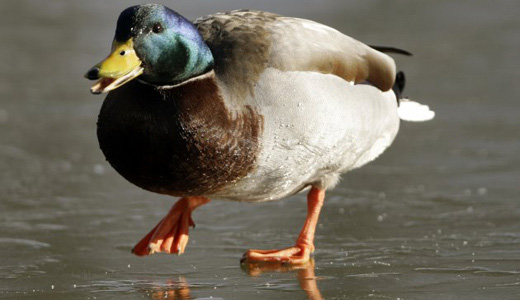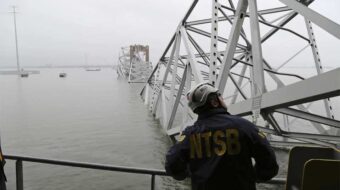
As perhaps a million or more people make their plans to participate in the People’s Climate March at the UN in New York on Sept. 21, stepping up what has become a planet-wide fight against global warming, experts have issued a new warning that many species of American birds are facing extinction.
According to a report released Sept. 8 by the National Audubon Society, global warming has drawn birds across the U.S. into a fight of their own against global warming – a fight for their very survival. The disconcerting new report notes that climate change will affect the bird population so severely, half of all North American bird species will be decimated over the next 65 years. The hummingbird? Three-toed woodpecker? Trumpeter swan? They’re just some of 314 different birds that will soon be put on the brink of extinction.
In the study that preceded the report, the Society used 30 years’ worth of scientific observation to determine the “climatic suitability” for each of 588 major North American bird species. The varying suitabilities were then juxtaposed with internationally recognized greenhouse gas emission projections, and from this, they were able to extrapolate an educated idea of where each bird’s climatic range would be in the future, amidst the changes caused by global warming. The findings showed that at least 314 species are in deep trouble, and will lose more than 50 percent of their range by 2080.
Activists might be able to take measures to save some species, the report suggested. This will involve continuing the fight against climate change, and that means moving away from fossil fuels, curbing carbon emissions, and helping in the battle for animal conservation. Even then, some bird species may indeed be doomed.
“Common sense will tell you that with these kinds of findings, it’s hard to believe we won’t lose some species to extinction,” said National Audubon Society president David Yarnold. “How many? We honestly don’t know. We don’t know which ones are going to prove heroically resilient.” Could some birds migrate to other areas? Yes, he admitted, and to a certain degree, that’s already happening. And yet, even there, an issue arises. He noted, “Some can and some will. But what happens to a yellow-billed magpie in California that depends upon scrub oak habitat? What happens as that bird keeps moving higher and higher and farther north, and runs out of oak trees? Trees don’t fly. Birds do.”
Shifting bird populations have already occurred in many areas, however, including in the Windy City, according to Rebeccah Sanders, executive director of the Chicago Region Audubon. Mallards, the ducks famously known for their green necks and commonly found in parks and near lakes, are projected to vanish from the Chicago area by 2080, and are already dwindling in numbers. “It was shocking to everybody that I’ve talked to, even in Audubon,” said Sanders. “It’s a bird that we all know, a bird that people really identify with. It would just be really shocking to lose a species like that.”
The city might also soon lose the red-billed gull (those local seagulls that so often forage in McDonald’s parking lots), a songbird called the bobolink, the aforementioned trumpeter swan, and the tree swallow. Chicago has at least taken steps to save the bobolink, with Bobolink Meadow in Jackson Park having been recently restored; this could allow the songbird to actually make a comeback to the area.
There’s a certain trickle-down effect that could result from this coming decimation, and that will affect humans. The absence of birds that consume pests and disease-spreading insects could allow those would-be prey to run rampant and overpopulate, according to Terry Root, a Stanford University biologist. She remarked, “If we are losing as many species as this is saying, what’s going to happen to all the insects they eat? There are going to be winners if you move a species out of a region, and those winners might be mosquitoes and spiders.”
Like the Bobolink Meadow effort, the fight for conservation must continue, experts agree, if there is any hope to be had for any of these species. Dr. Resit Akçakaya, a professor in Stony Brook University’s Department of Ecology and Evolution, stated, “The bad news is that climate change will cause many extinctions unless species-specific conservation actions are taken.”
Audubon Society president Yarnold concluded by predicting that climate change will truly test the limits and adaptability of bird species that North Americans currently regard as iconic or commonplace. “We just don’t know,” he said, “whether they’ll be able to find the food sources and the habitat and cope with a new range of predators. Maybe they’ll all be incredibly hardy and find ways to survive. But that doesn’t seem likely.”
Photo: The Mallard duck, once common in parks in Chicago and other cities, is growing sparse, and may not be seen in the city a few decades from now. Mike Groll/AP












Comments